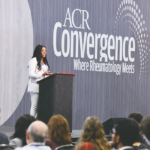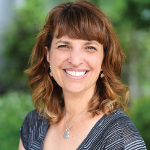Second, block out your schedule, including canceling clinics, silencing phones and clearing your schedule of other meetings.
“In a virtual meeting, even as hard as you try to minimize [other] things, sometimes life intrudes regardless,” Dr. Schulert said. “But there are things you can do to minimize those distractions to get the most out of the meeting.”
Third, use social media, which can help you find interesting talks and posters and help you engage directly with rheumatologists. It can also help get your own work out there.
Next, use the event platform. “There are some changes in how this looks this year, which I think are going to be for the better,” Dr. Schulert said.
This year, the Community Hubs are more visible and will have threaded discussions to make them easier to use and follow. Also, messaging other meeting participants is now easier. And attendees can also schedule individual meetings, which are like a one-on-one Zoom call.
Finally, follow up, Dr. Schulert said. Send thank you notes to the people you meet. If you talked about job prospects, follow up about it. If you discussed a new project, determine specific next steps, so you don’t lose the momentum.
He strongly suggested “taking some of these concrete steps so you don’t wake up three months later and realize we never actually did anything about these great discussions that we had.”
Thomas Collins is a freelance medical writer based in Florida.


